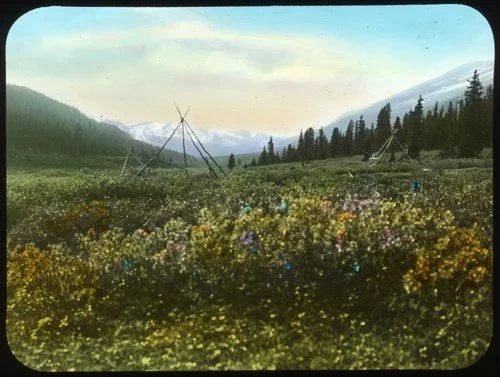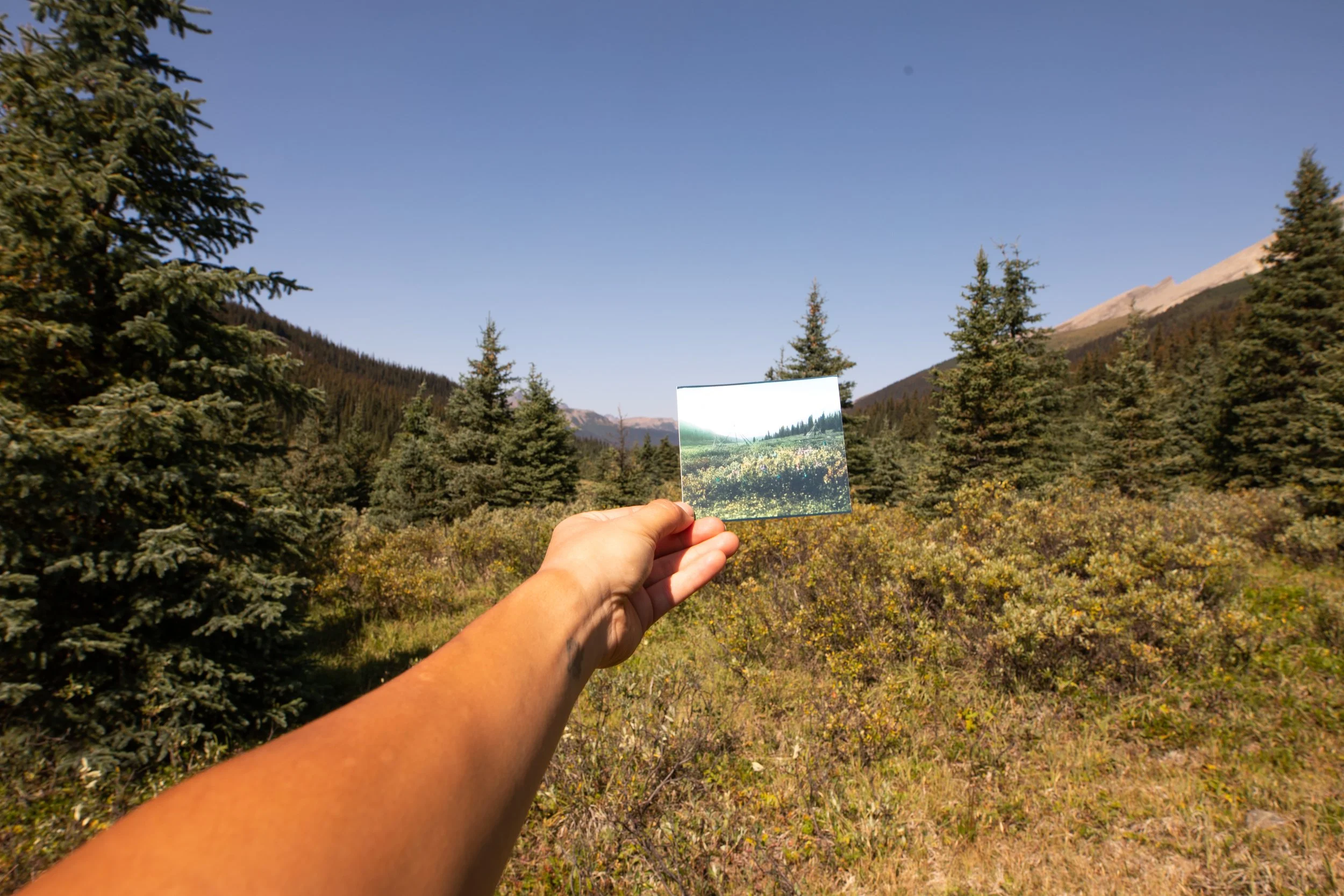Indigenous Resources
“Old-growth cultures, like old-growth forests, have not been exterminated. The land holds their memory and the possibility of re-generation. They are not only a matter of ethnicity or history, but of relationships born out of reciprocity between land and people.”
— Robin Wall Kimmerer, Braiding Sweetgrass
Mary Schäffer Warren’s legacy has been a celebrated one, especially in the Canadian Rockies. But, as filmmakers, we’re reckoning with some incongruities, as well as her colonial perspective that influenced the way she depicted her relationship with Indigenous peoples.
While Schäffer was sure to acknowledge the heritage and homelands of the Indigenous people whose trails she followed, she overrode those lands with her own names; while she sought to befriend Indigenous people, particularly from the Îyârhe Nakoda Nation, she at times spoke condescendingly of them using language that was unacceptable both then and now; also, the impact of her journey to Maligne Lake ultimately led to the inclusion of it in Jasper National Park, which meant severe hunting restrictions for those who had hunted in the area for millennia.
In a more specific example, we’ve come across several interpretations of the interaction she had with Sampson Beaver on the Kootenay Plains in 1907, which led to his drawing of a map to Chaba Imne (Maligne Lake). We’re more than curious to know what really transpired.
Maligne Valley - East [1908]; V527 / PS 1 - 76 WMCR.
Repeat image taken in the Maligne Valley [2023] by Nat Gillis.
Ultimately these questions and concerns are reflected back to us in our modern context and what we as non-Indigenous filmmakers can do to shed light on these issues and seek a dialogue with the Indigenous community. Our hope is that we can tell a more complete story.
In our process, we have been leaning into some Indigenous resources, and we’ve outlined a selection below:
Course: Indigenous Canada
This open course through the University of Alberta is free to take, self-paced and available to start anytime.
Course: Reconciliation Education
Online courses and films from the First Nations University of Canada (check them out to see when they open for registration next!)
Books
These Mountains Are Our Sacred Places: The Story of the Stoney People, by Chief John Snow
Blackfoot Ways of Knowing: The Worldview of the Siksikaitsitapi, by Betty Bastien
Braiding Sweetgrass, by Robin Wall Kimmerer
Websites
National Centre for Truth and Reconciliation
Stoney Education Authority - preserving the Stoney Nation culture, language, history and collective knowledge
native-land.ca - a map to help you identify native lands
Podcast
Matriarch Movement (podcast) with host Shayla Oulette Stonechild
Archives
About the images above: The right-hand one depicts our experience of travelling through the Maligne River Valley in August 2023. Schâffer’s image (left) showed tepee poles that she came across. When our team arrived at this location, we reflected on whose footsteps we were really following. We got the sense that the land was holding this memory, even if we couldn’t find the tepee poles.
We welcome you to contact us if you have any additional resources, books, or individuals that may guide us in this learning journey.



